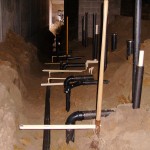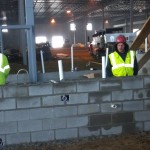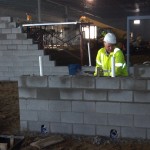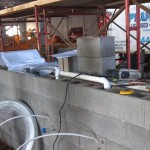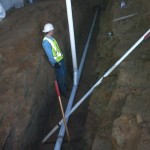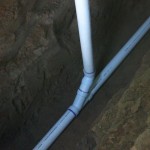New Construction Plumbing Services
New construction plumbing is made simple with Sowada & Barna Plumbing.
Building a new home is a complicated endeavor that is compounded by the various elements that each individual task requires, such as the costs for plumbing a home. This is completely separate from the framing of a home or installing tile on floors and is normally bid out separately. If you want to estimate plumbing costs for new construction, it helps to know the complexities you can run into.
Rough Square Footage Costs
Add-Ons & Additional Work
Excavation
New Construction Plumbing Tips
- Don't go galvanic
- Flow out, not back
- Use the right connector
- Know where your pipes are
- Know the code
- Cut right, fit tight
- Seal the deal
- Don't over-tighten
- Leak test. Always.
You often see copper and galvanized steel plumbing mixed in residential water systems with nothing separating them other than a little thread sealant or Teflon plumbing tape. The galvanic connection (copper to steel) can be trouble-free for years or the steel plumbing can begin to corrode almost as soon as the connection is tight.
Back flow occurs in municipal water systems (or within a house) when there’s a sudden and severe drop in water pressure that causes water to flow back through pipes opposite the direction that it normally flows.
When a runaway car severs a fire hydrant, for example, parts of a municipal system will see a flow reversal as water gushes out the hole where the hydrant once stood. The same thing can happen if there’s a massive leak within your house.
Don’t forget, gas lines count as plumbing too. Connecting a new gas range or dryer to an existing gas line seems simple, but the job can quickly go awry when you try to hook up a flexible gas connector to the line and find that the connector doesn’t fit or you can’t make the connection gas-tight, no matter how tight you make the connection.
Pounding nails and driving screws is all well and good, until you puncture a copper or plastic supply or drain.
Plumbing is a tricky business, with rules that dictate how far you can place a fixture from the home’s drain-waste-vent line based on the pipe diameter and other arcane matters. The only way you can handle a big job yourself is to know the code and what it calls for in pipe sizing, fixture spacing and related matters.
You can’t make a neat water- or gas-tight joint unless the parts are neatly cut.
Only a soldered or glued joint doesn’t require sealant; everything else does.
If tight is good, really tight must be better. Right? Wrong.
It should be obvious: Make a thorough leak inspection before closing up and moving on.

